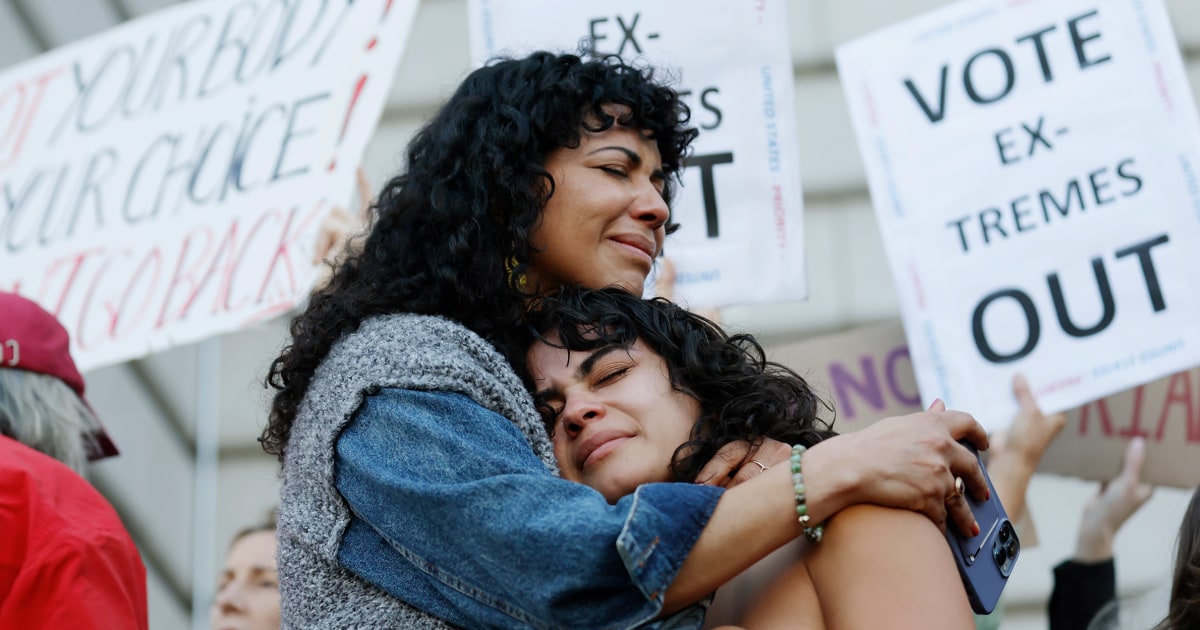Latinas are the largest group of women of color affected by current and future state abortion bans and restrictions: More than 4 in 10 Latinas of reproductive age live in the nearly two dozen states where officials are working to make abortion inaccessible.
A new analysis from the National Partnership for Women & Families and the National Latina Institute for Reproductive Justice, first shared with NBC News, found that close to 6.5 million Latinas (42% of all Latinas ages 15-49) live in 26 states that have banned or are likely to ban abortions after the Supreme Court struck down Roe v. Wade this summer.
“This community is really facing the brunt of the overturn of Roe v. Wade,” a co-author of the analysis, Candace Gibson, the director of government relations at the National Latina Institute for Reproductive Justice, said in an interview. Both groups support abortion access.
Three-quarters of the Latinas who live in states with abortion bans or restrictions are concentrated in Texas, Florida and Arizona.
Texas, where abortions are banned, is home to 2.9 million Latinas of reproductive age. Florida and Arizona, where abortions are restricted, are home to 1.4 million and 587,600 Latinas of reproductive age, respectively.
Roe’s repeal opened the door for 13 states, most of them in the South and the Midwest, to implement abortion bans. Six states have restricted or are looking to restrict access to abortions, and pending bans could go into effect in seven states later in the year.
“Anyone who is capable of getting pregnant at some point may need abortion care,” said another co-author of the analysis, Shaina Goodman, the director for reproductive health and rights at the National Partnership for Women & Families.
Nearly 3.1 million Latinas affected by current and future abortion bans in the 26 states are already mothers. About 28% of them have children under age 3.
The analysis found that nearly 3 million Latinas in the 26 states where efforts are underway to make abortion inaccessible were “economically insecure” or living in families below 200% of the federal poverty line.
“The breakdown of the data is really about telling a story about who is harmed. It’s moms, it’s moms with young kids, it’s people who are struggling to make ends meet,” Goodman said.
Research shows that mothers who are forced to carry unwanted pregnancies and their children are four times more likely to live below the federal poverty line, according to The Turnaway Study, a University of California San Francisco research project that examined women who had abortions compared with those who were denied them over a 10-year period.
“To add context there, we know that Latinas and Latinxs often work multiple jobs that provide no sick days or insurance coverage and live in underserved communities,” Gibson said.
Besides address, other factors affect Hispanic women’s ability to access abortion care, such as motherhood, economic status, disability, English proficiency and race.
“People often are living their lives at the intersection of these categories,” Goodman said. “They’re encountering structural barriers at the intersections of all of those identities that make access to care incredibly difficult and sometimes impossible.”
Another study — published in January by the National Bureau of Economic Research, which used data from The Turnaway Study to track the credit histories of women who could not get abortions — found that those who were denied abortions faced increased rates of unpaid debt, poverty, evictions and bankruptcies in the five years following their children’s births.
Share your story or advertise with us: Whatsapp: +2347068606071 Email: info@newspotng.com














